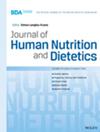Should gestational weight gain charts exclude individuals with excess postpartum weight retention?
Abstract
Background
High gestational weight gain is associated with excess postpartum weight retention, yet excess postpartum weight retention is not an exclusion criterion for current gestational weight gain charts. We aimed to assess the impact of excluding individuals with high interpregnancy weight change (a proxy for excess postpartum weight retention) on gestational weight gain distributions.
Methods
We included individuals with an index birth from 2008 to 2014 and a subsequent birth before 2019, in the population-based Stockholm-Gotland Perinatal Cohort. We estimated gestational weight gain (kg) at 25 and 37 weeks, using weight at first prenatal visit (<14 weeks) as the reference. We calculated high interpregnancy weight change (≥10 kg and ≥5 kg) using the difference between weight at the start of an index and subsequent pregnancy. We compared gestational weight gain distributions and percentiles (stratified by early-pregnancy body mass index) before and after excluding participants with high interpregnancy weight change.
Results
Among 55,723 participants, 17% had ≥10 kg and 34% had ≥5 kg interpregnancy weight change. The third, tenth, 50th, 90th and 97th percentiles of gestational weight gain were similar (largely within 1 kg) before versus after excluding participants with high interpregnancy weight change, at both 25 and 37 weeks. For example, among normal weight participants at 37 weeks, the 50th and 97th percentiles were 14 kg and 23 kg including versus 13 kg and 23 kg excluding participants with ≥5 kg interpregnancy weight change.
Conclusions
Excluding individuals with excess postpartum weight retention from normative gestational weight gain charts may not meaningfully impact the charts' percentiles.


 求助内容:
求助内容: 应助结果提醒方式:
应助结果提醒方式:


